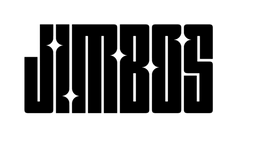How to Use a One-Step Polish for Maximum Cut
One-step polishes are incredibly versatile, but many people don’t realize just how much cutting power they can deliver when used correctly. With the right pad, pressure, and technique, a polish like Picture Perfect Polish can remove surprisingly deep defects while still finishing beautifully. This guide will walk you through exactly how to maximize cut without sacrificing gloss.
Why One-Step Polishes Are Pad-Dependent
Unlike dedicated compounds or finishing polishes, one-step polishes are designed to adapt. This means their abrasives and performance characteristics change depending on how you use them. For example:
- On a cutting pad: They behave more like compounds, aggressively leveling defects.
- On a polishing pad: They balance defect removal and gloss enhancement.
- On a finishing pad: They act like a fine polish, refining the surface to maximum clarity.
This flexibility makes one-step products a favorite for professionals and enthusiasts alike. With the right setup, you can tailor the cut and finish to match any vehicle’s needs.
What Does "Maximum Cut" Mean?
Maximum cut refers to the polish’s ability to remove defects in the clear coat — such as scratches, swirls, oxidation, and etching — in the shortest amount of time without creating additional damage. With a one-step, maximum cut doesn’t mean “compounding-level aggression,” but it does mean pushing the product to its full potential while still maintaining a decent finish.
Key Factors for Maximizing Cut with a One-Step Polish
1. Pad Selection
Your pad choice is the single most important factor. For maximum cut:
- Use a microfiber cutting pad for fast correction on hard paints.
- Use a foam cutting pad for controlled defect removal on softer paints.
2. Machine Choice
- Dual Action (DA) Polisher: Safer, but slightly slower correction. Excellent for beginners.
- Rotary Polisher: Fastest correction, but higher risk of holograms. Best for advanced users.
3. Pressure and Speed
Applying moderate pressure at a higher machine speed (typically speed 4–5 on a DA) allows the abrasives to work aggressively. However, lighten up on your final passes to refine the finish.
4. Section Size
Work in small sections (2x2 ft.) to maintain consistent cut and avoid drying out the polish. Smaller sections mean more even correction and fewer missed defects.
5. Pad Maintenance
Dirty or clogged pads dramatically reduce cutting power. Clean your pad after every couple of passes with compressed air, a brush, or a pad washer.
Comparison: One-Step Maximum Cut vs Dedicated Compound
| Factor | One-Step Polish (Max Cut) | Dedicated Compound |
|---|---|---|
| Correction Power | Moderate-High (with cutting pad) | Very High |
| Finish Quality | Glossy, often needs no refining | Usually requires follow-up polish |
| Time Required | 1–3 hours (full car) | 6–12+ hours (multi-step) |
| Best Use | Daily drivers, efficiency polishing | Show cars, heavy damage correction |
Step-by-Step Guide: Maximizing Cut with Picture Perfect Polish
- Wash and Decontaminate: Always start with a thorough wash using The Super Soaper, followed by clay if needed.
- Inspect Paint: Use bright LED lighting to identify defects.
- Choose a Cutting Pad: Microfiber pads for hard paints, foam cutting pads for softer paints.
- Prime the Pad: Spread a thin layer of polish across the pad before polishing.
- Set Machine Speed: Use speed 4–5 on a DA polisher for maximum correction.
- Apply Moderate Pressure: Work the polish into the paint with overlapping passes.
- Final Light Passes: Reduce pressure and slow down for the last 2 passes to refine gloss.
- Inspect Results: Wipe away residue and check under lighting.
- Protect the Finish: Lock in results with a ceramic spray like Tough As Shell.
Pro Tips for Achieving Maximum Cut Without Sacrificing Gloss
- Don’t overload the pad — too much product reduces cut.
- Switch to fresh pads as soon as cutting ability decreases.
- Always finish with lighter pressure to avoid holograms.
- Use multiple lighting angles to confirm true correction.
Unlock Maximum Cut with Picture Perfect Polish
Safe, versatile, and pad-dependent — Picture Perfect Polish adapts to your needs for stunning correction and gloss.
Buy on Jimbo’s Detailing Buy on AmazonRelated Posts
- One-Step Polish vs Multi-Step Correction – Which Is Best?
- The Truth About Cutting vs Finishing Pads
- How to Avoid Holograms When Polishing
FAQs
Can a one-step polish remove deep scratches?
It can reduce them significantly, but very deep scratches may require a compound or wet sanding.
Will a one-step polish leave holograms?
When used correctly with a DA and finishing passes, one-step polishes like Picture Perfect Polish finish hologram-free.
How many pads should I use for a full car?
Plan on at least 3–4 cutting pads for consistent performance. Pads load up quickly and lose effectiveness if not rotated.
Can I protect immediately after polishing?
Yes. Apply a ceramic spray or coating immediately after polishing to seal in results.
Is one-step polishing safe for beginners?
Yes. With a DA polisher and proper pad choice, one-step polishing is beginner-friendly while still delivering pro-level results.



